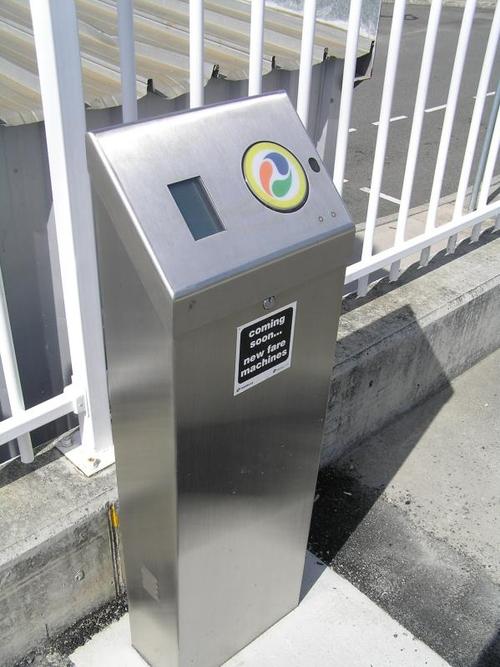The Card Swiper Swiped My Patience
October 26, 2011

Looks like some monkeys were involved in the design of the cubic go-card readers at suburban train stations in Brisbane, Australia. A new additional card reader has just been installed at the train station I use. My first thoughts are, "Errrhh!"
The display on the reader has low contrast. The audible beeps are not loud enough. The visible indicator (red or green) is still not bright enough.

These new machines are no improvement over the old ones. Sometimes it is difficult to determine if I have successfully "touched off" the reader. To top it off, at the end of the journey, there is a fine imposed automatically for not "touching" the card reader. The fine can be refunded if you argue that the reader didn't work, but that process takes days, and your claim may be rejected. So even after some years of go-card installation and so-called improvements, they still haven't got it right.
There are a number of HMI problems I've experienced with these suburban train station card readers:
The LCD display is fairly small and has low contrast. In unfavorable light conditions, it is extremely difficult to read, especially since it is outdoors.
The display fogs up in heavy rain during summer months, rendering the display unreadable.
There is an audible indication of a card swipe. However, the beeps are not very loud, and if the train is departing, the beeps are very hard to hear.
The beeper on some units fails altogether, possibly due to water ingress.
There is visible indication of a card swipe by way of indicator lamp, but since the LED has low intensity and is in unfavorable light conditions in either morning or afternoon sunlight, it can be almost impossible to see indication.
The LCD deteriorates over time from sunlight exposure. It becomes unreadable on some units. Some of these issues (foggy screen, failing beeper, and maybe the LCD degradation) may have been fixed on newer readers, but the fundamental poor HMI is as bad as ever.
The above deficiencies contribute to overall confusion -- "Did it read my card?" -- and it requires extra attention to the machine to attain positive feedback. The time available to observe the reader feedback can be less than two seconds before the next passenger swipes a card.
Apart from these issues, the card reader machines function well -- that is, when they are working.
These problems could be a result of the test function. It could be the designers tested the units indoors or at night and decided, "Yep, looks good." Or maybe they did not complete adequate ergonomic, environmental, and conditional testing at all.
You can find a relevant discussion of the go-card reader problems here.
This entry was submitted by Toni Graham and edited by Rob Spiegel.
Tell us your experiences with Monkey-designed products. Send to Rob Spiegel for Made by Monkeys.
About the Author(s)
You May Also Like



.jpg?width=300&auto=webp&quality=80&disable=upscale)

